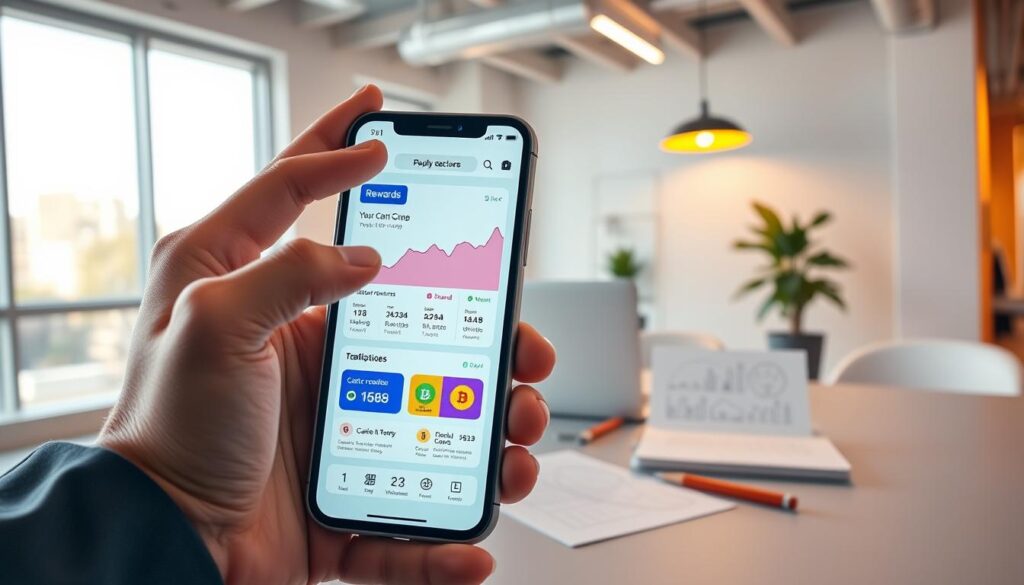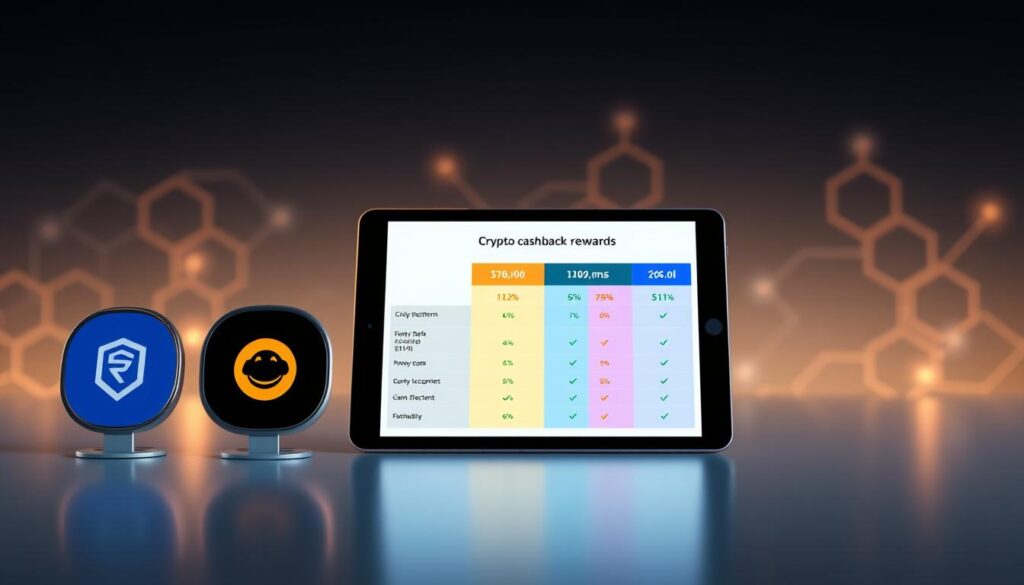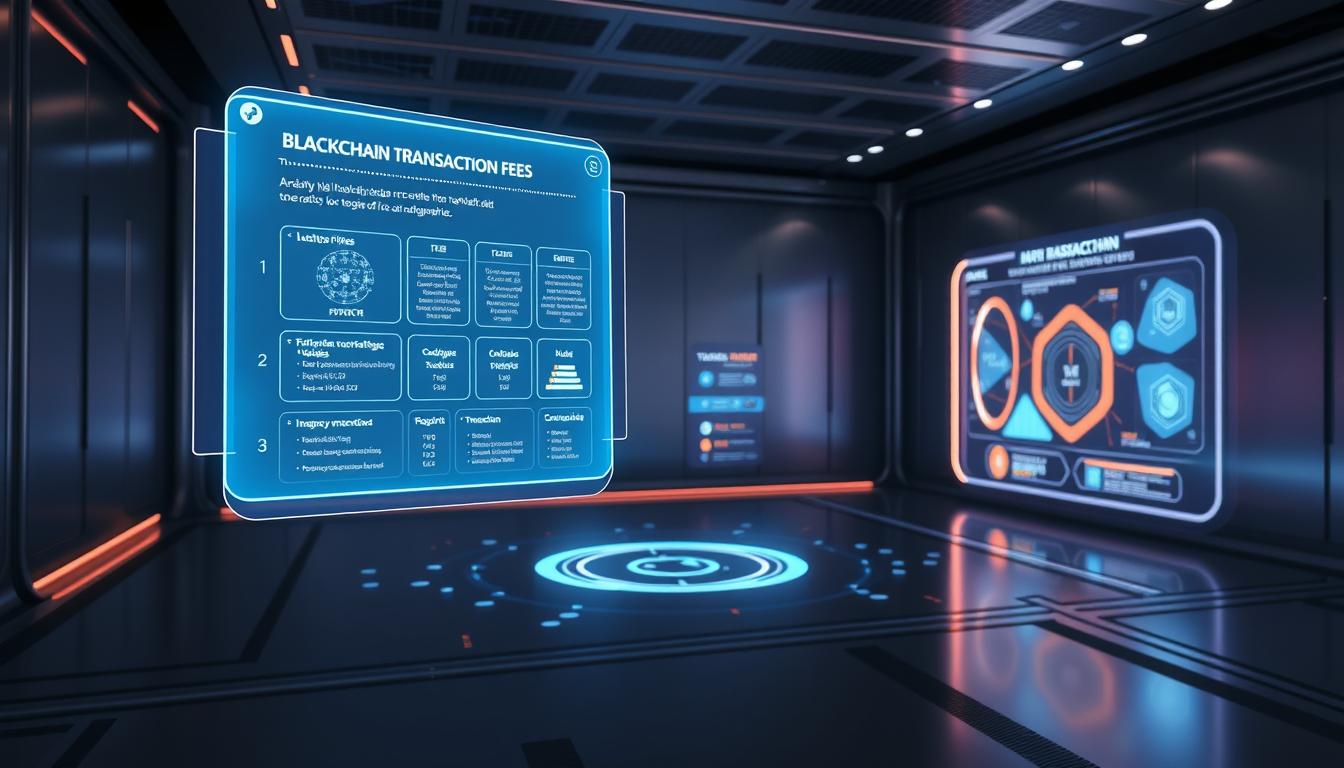Now Reading: A Guide to the Most Popular Solana Tokens
- 01
A Guide to the Most Popular Solana Tokens
A Guide to the Most Popular Solana Tokens
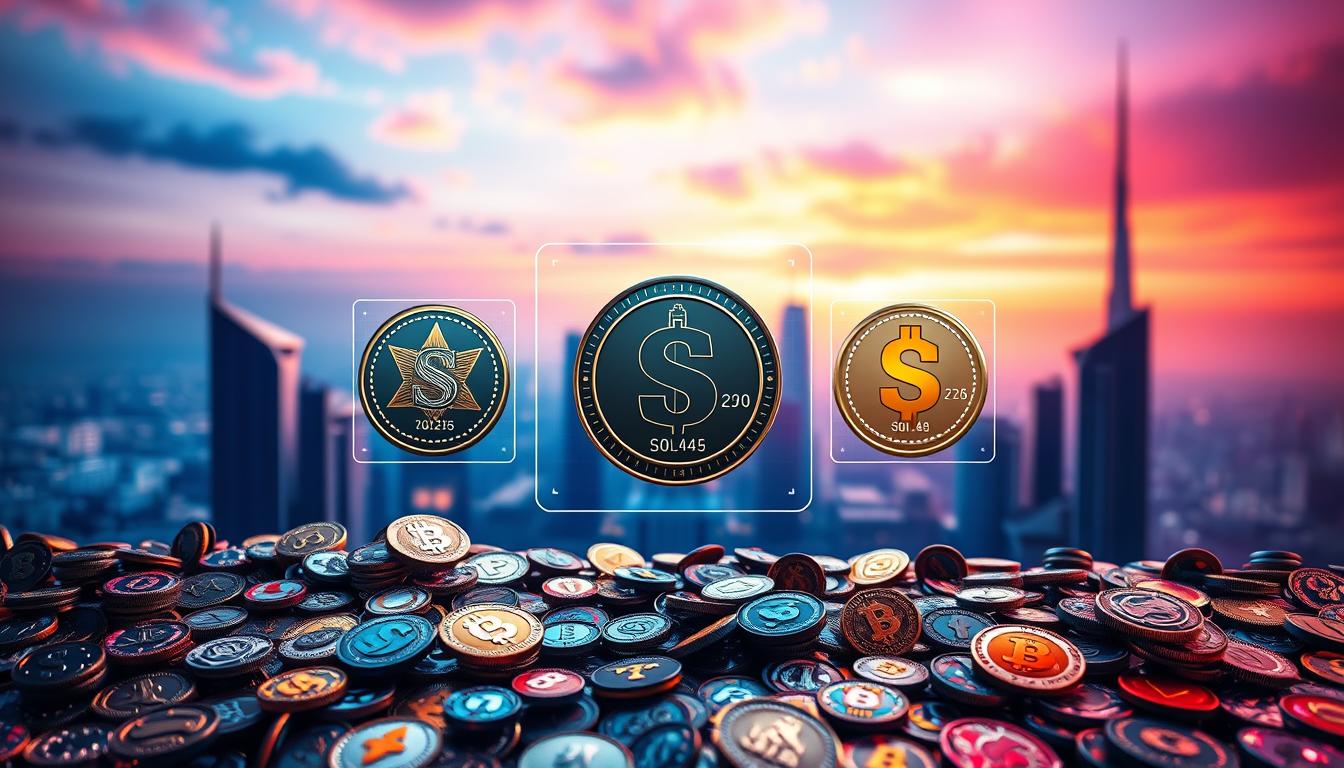
Solana is a top blockchain platform known for its speed and low costs. It has a wide range of Popular Solana tokens. These tokens play key roles in DeFi, NFTs, and web3 apps. This guide will help you understand the top Solana tokens list and which projects are leading the way.
More investors and developers are choosing Solana for its scalable infrastructure. This infrastructure makes transactions fast and cheap. The top Solana tokens list includes SOL and other innovative protocols. These tokens are crucial for DeFi and gaming apps, driving the network’s growth.
Key Takeaways
- Solana’s speed and low fees attract users seeking efficient blockchain solutions.
- The Popular Solana tokens enable diverse use cases, from DeFi lending to NFT marketplaces.
- This guide covers evaluation methods and strategies to navigate the top Solana tokens list.
- Understanding token roles helps identify opportunities in Solana’s expanding ecosystem.
- Key factors like team expertise and real-world adoption drive token success.
Understanding the Solana Blockchain Ecosystem
Solana combines advanced tech to support Solana ecosystem projects and Popular Solana tokens. It uses a unique hybrid system of Proof of History (PoH) and Proof of Stake (PoS). This method makes transactions fast and energy-efficient, unlike traditional mining.
What Makes Solana Different from Other Blockchains
PoH lets Solana handle over 65,000 transactions per second. This is way faster than Ethereum and Cardano. Solana also has very low fees, making it perfect for fast apps.
The Rise of Solana as a Layer-1 Solution
- Launched in 2020, Solana now hosts over 4,500 active dApps.
- Major exchanges and investors have made it one of the top 10 cryptocurrencies.
Key Benefits: Speed, Scalability, and Low Fees
Developers love Solana for its scalability. It settles transactions in 400ms, great for real-time apps. Low fees also boost Popular Solana tokens like Serum and Raydium. Solana is key for the future of decentralized apps.
What Are Solana Tokens and How Do They Work?
Solana tokens are digital assets on its blockchain. They support DeFi and NFTs. These tokens follow the SPL standard, making creation and transactions fast.
Unlike Ethereum’s ERC-20 tokens, SPL tokens are quicker. They can transfer funds in seconds.
- SPL tokens use smart contracts for rules like supply limits and permissions.
- Each token is a token account on the blockchain, linked to user wallets.
- Associated token accounts manage funds, reducing user errors.
The Solana token market cap shows a token’s total value. It shows which Popular Solana tokens are leading. For example, Serum (SRM) and Raydium (RAY) are big in DeFi.
To create tokens on Solana, you need to write a SPL-compliant program. Developers use tools like Anchor Framework. This ensures they work well with Solana’s architecture.
Users interact with these tokens through wallets like Phantom. This system makes the Solana token market cap grow. More projects use its infrastructure.
The Meteoric Rise of Popular Solana Tokens in the Crypto Market
Solana token prices have skyrocketed since 2021. This is thanks to innovation and growing demand. The best Solana tokens 2021 helped Solana become a leader in DeFi and blockchain.
Growth Statistics and Market Performance
Market data shows impressive gains: SOL’s price jumped over 3,000% in 2021. The total value locked (TVL) for top tokens reached $12B. Key metrics include:
- Trading volumes exceeded $50B monthly by late 2021
- TVL grew from $1B to $12B in just 12 months
- Top tokens like Serum and Raydium led in DEX and NFT markets
Comparing Solana Token Growth to Other Blockchain Ecosystems
Solana outshone Ethereum and Binance Smart Chain in 2021. Its speed and low fees were key advantages. Solana’s DeFi TVL grew 40% faster than rivals, with quicker transactions.
Factors Driving Solana’s Popularity
Three main factors drive Solana’s success:
- Developer grants and hackathons attracted 10,000+ builders
- Institutional backing from Fidelity and major VCs
- User-friendly tools making it easier to start
The best Solana tokens 2021 like Orca and Magic Eden show Solana’s growth. They set high standards for scalability and ease of use.
SOL: The Native Token Powering the Ecosystem
SOL is at the core of Solana, making the network work. It handles transactions, keeps things secure, and helps with governance.
SOL Tokenomics and Distribution
SOL has a total supply of 489.8 million tokens, with a fixed cap. The Solana Foundation keeps some, while 50% went to early supporters and public sales. Validators get rewards for keeping the network safe.
Use Cases for the SOL Token
- Transaction Fees: Users pay SOL for smart contracts or trades.
- Staking: Holders stake SOL to validate transactions and earn rewards.
- Governance: Token holders vote on upgrades using their SOL.
- Collateral: Used in DeFi apps for liquidity and loans.
Historical Price Action and Future Projections
SOL’s Solana token prices jumped from under $1 in 2020 to over $250 in 2021. This shows the Solana token market cap is growing. Experts look at adoption and growth to guess SOL’s future.
Top DeFi Tokens in the Solana Ecosystem
The top Solana tokens list showcases cutting-edge DeFi projects in the Solana ecosystem projects. These tokens make fast, affordable financial services like trading, lending, and derivatives possible.
- Raydium: Leading AMM with automated liquidity pools. Processes swaps in seconds, securing billions in TVL.
- Orca: Customizable AMM for yield farming and hybrid pools, offering flexible staking options.
- Solend: Lending platform enabling users to borrow assets with SOL as collateral. Supports over 50 tokens.
- Larix: Stablecoin-focused lending with dynamic interest rates and minimal slippage.
- Tulip Protocol: Yield aggregator optimizing returns through algorithmic strategies across multiple protocols.
- Francium: Simplifies yield farming by aggregating opportunities into user-friendly interfaces.
- Drift Protocol: Futures trading platform for crypto derivatives, executing trades in milliseconds.
- Mango Markets: All-in-one hub for trading, lending, and derivatives with cross-asset leverage.
These protocols work together smoothly, letting users quickly move funds between platforms. When picking from the top Solana tokens list, look at TVL, token distribution, and adoption rates. High TVL shows good liquidity, and smart tokenomics can boost long-term value.
Leading NFT and Gaming Tokens on Solana
Solana’s fast and low-cost blockchain is driving innovation in NFTs and gaming. It hosts projects that change how we think about digital ownership and virtual experiences. These projects use tokens to power marketplaces, virtual worlds, and games, creating new economies.

NFT marketplaces like Solanart and Magic Eden use their own tokens. These tokens reward users and help govern the platforms. For example, Magic Eden’s METAl token lets holders vote on fees and upgrades.
- Solanart: Token holders earn trading fees through governance participation.
- Digital Eyes: Focuses on art NFTs, with tokens fueling creator incentives.
Gaming projects like Star Atlas and Aurory use Solana’s speed for smooth in-game economies. Players trade items and characters via NFTs, backed by tokens like ATLAS and AURY. These tokens also reward players with real-world value.
Metaverse platforms like Metaplex and Genopets create virtual worlds. Users can own digital spaces and assets. Genopets’ GENE token powers battles and breeding, while Metaplex’s tools help developers create NFTs. These Solana ecosystem projects show how blockchain tech combines gaming, collectibles, and decentralized economies.
Learn more about Solana’s growth here. The ecosystem’s speed makes it a center for next-gen NFT and gaming experiences.
Solana Stablecoins and Their Importance
Stablecoins bring stability to the unpredictable crypto market. They are key for a smooth Solana token exchange experience. These assets, often in the top Solana tokens list, offer a safe way to trade, stake, and protect against price changes.
- USDC and USDT: Fully backed by fiat reserves, they lead in liquidity on Serum.
- UST (TerraUSD): Its algorithmic mechanism caused volatility, highlighting the need for stablecoin risk management.
- USDH: Solana’s native stablecoin, aiming for balance between stability and decentralized governance.
On Solana token exchange platforms, these assets make trading easier. They are part of protocols like Orca and Jupiter, making cross-chain transfers smooth. Users can also earn by staking stablecoins on Solend, getting returns without market risk.
But, regulatory attention affects their use. Issuers must follow anti-money laundering (AML) rules. Before investing, check the backing and the issuer’s trustworthiness. Stablecoins are crucial for both everyday use and complex DeFi strategies as Solana grows.
How to Evaluate and Choose Promising Solana Tokens
Investing in the best Solana tokens 2021 is more than just looking at the market cap. You need to check the token’s fundamentals, metrics, and community strength. Here’s how to make smart choices.
Token Fundamentals: Team, Technology, and Tokenomics
First, look at the key factors that show a token’s worth:
- Team: Check the founders’ backgrounds and past achievements. A weak team can ruin a good project.
- Technology: See if the token offers something new and better than others.
- Tokenomics: Look at how the tokens are distributed and when they can be sold. This helps avoid too many tokens or insider sales.
On-Chain Metrics to Consider
Watch how tokens are used by looking at metrics like daily transactions and active addresses. High numbers mean people are using them. Don’t just look at the Solana token market cap:
- Transaction Volume: More transactions mean it’s being used.
- Active Addresses: More users every day show it’s popular.
- Protocol Revenue
Community and Development Activity
A strong community is key for growth. Look for updates and partnerships:
- Social Media: Check for active Twitter/Telegram posts.
- GitHub Commits: See if there are regular code updates.
- Partnerships: Look for collaborations with big names.
Step-by-Step Guide to Purchasing Solana Tokens
Getting Solana tokens begins with picking the right tools and platforms. Follow these steps to safely buy and manage your assets:
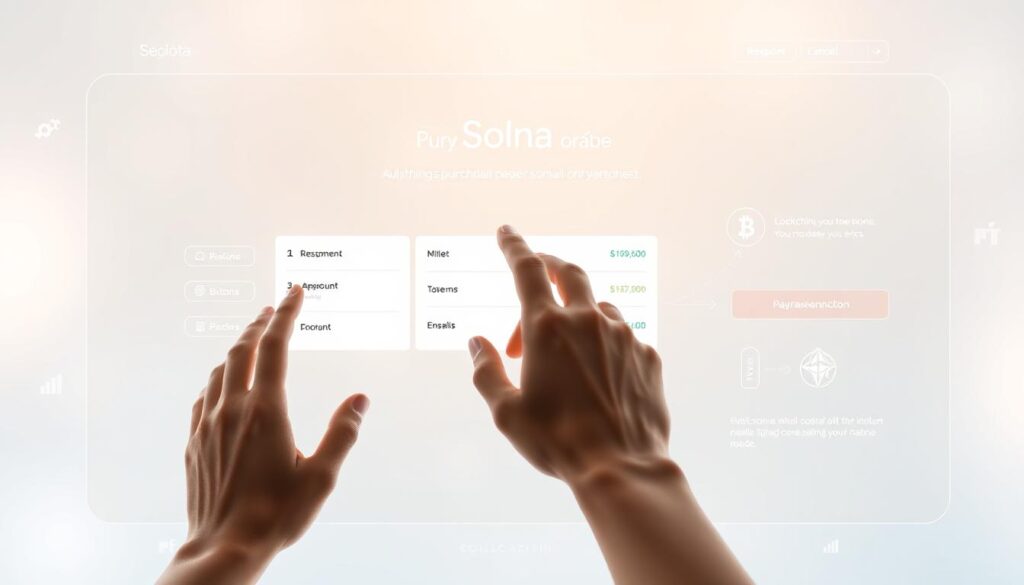
Setting Up a Solana-Compatible Wallet
Create a secure foundation with these steps:
- Download a wallet app like Phantom or Solflare from their official websites.
- Generate a new wallet. Save the 12-24 word seed phrase in a secure location.
- Enable two-factor authentication (2FA) to protect funds from unauthorized access.
Top Exchanges for Buying Solana Tokens
Choose from these leading Solana token exchange platforms:
- Binance: Offers fast transactions with over 200 Popular Solana tokens available.
- Coinbase: User-friendly interface with simplified KYC processes.
- FTX: Specializes in derivatives and high-volume trading options.
Navigating DEXs in the Solana Ecosystem
Decentralized exchanges (DEXs) like Raydium and Orca let users trade directly on-chain. Steps include:
- Connect your wallet to the DEX platform.
- Select tokens using the trading interface, checking liquidity and price slippage.
- Confirm transactions via your wallet’s approval screen.
Always verify token addresses and network fees before finalizing trades.
Solana Token Staking and Yield Opportunities
Investors can grow their holdings through Solana token staking and yield strategies. These go beyond just watching prices. By staking native SOL, holders can help secure the network and earn Solana token rewards.
How much you earn depends on the validator’s performance and when you unstake. This usually takes a few days.
Liquidity staking platforms like Marinade Finance and Lido offer a unique option. Users can stake SOL while still keeping their tokens liquid. These platforms issue special tokens (like sSOL) that can be traded or farmed.
DeFi protocols also offer yield through different ways:
- Lending and borrowing on platforms like Solend or Juno
- Liquidity provision for AMMs like Orca or Raydium
- Yield aggregators that optimize returns across protocols
Single-sided staking programs reward token holders for locking assets. This encourages more people to use the network. But, there are risks like losing money in liquidity pools or validators not working right.
It’s important to check how well validators perform and the security of platforms. This helps lower risks.
To get the most Solana token rewards, it’s key to balance risk and return. Spread out your investments across staking, DeFi, and specific projects. Always choose platforms that are open about their tokens and have a strong community.
Security Considerations for Solana Token Holders
Keeping Solana tokens safe is crucial. Cyber threats are always changing. Scammers use fake sites and tricks to steal from users. It’s important to stay alert and take steps to protect your investments.
Common Security Risks in the Ecosystem
- Phishing scams mimicking official Solana platforms
- Fake airdrop promotions demanding private keys
- Vulnerable smart contracts in DeFi protocols
- Malicious dApps designed to drain wallets
Best Practices for Protecting Your Investment
- Use hardware wallets like Ledger or Trezor for cold storage
- Verify project audits from firms like Certik before investing
- Enable two-factor authentication on all Solana token exchange accounts
- Monitor transactions via explorers like Solana Beach
Always check URLs for Solana services to avoid fake sites.
Recovery Options if Something Goes Wrong
If compromised:
1. Revoke compromised wallet access immediately
2. Report incidents to exchanges like FTX or Serum
3. Freeze suspicious transactions via Solana’s transaction monitoring tools
Keep track of recovery efforts on community forums and official channels.
Regulatory Landscape Affecting Solana Tokens
Regulations play a big role in how Solana ecosystem projects work and affect Solana token prices. Important areas include securities laws, compliance rules, and tax guidelines.
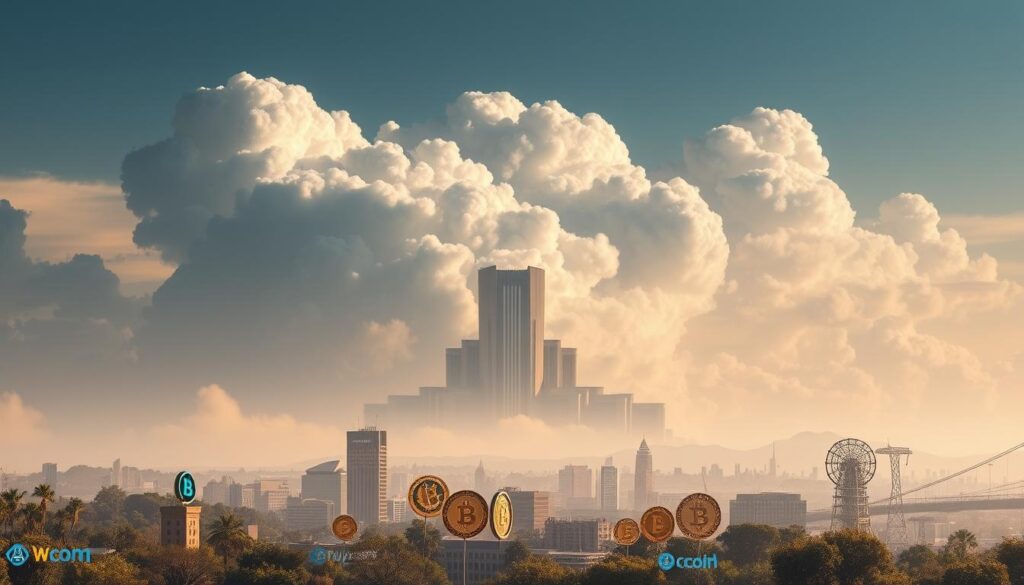
- Securities classification determines token legal status
- KYC/AML compliance for exchanges and users
- Tax reporting requirements for token transactions
- Border restrictions impacting global access
Big places like the U.S., EU, and Singapore have their own rules. In the U.S., SEC guidance shapes project plans. The EU focuses on protecting users with clear rules. Singapore tries to balance new ideas with rules.
Changes in rules can really move Solana token prices. When there’s a big change, like a new law, prices can jump up and down. For instance, when the SEC looks closely, prices might drop or rise fast.
Projects are making changes to follow the rules better. They’re working on new ways to govern themselves, teaming up with other companies, and making tools for taxes. Even though rules are tough, they help projects grow in a safe way. Investors need to keep up with local laws to make smart choices.
Upcoming Solana Token Projects to Watch
The Solana ecosystem is growing fast with new projects. These best Solana tokens 2021 and Solana ecosystem projects will change how we use blockchain. They’re working on DeFi, infrastructure, and cross-chain tech.
New DeFi Innovations on the Horizon
New DeFi platforms are trying out new ideas. They’re focusing on:
- Real-yield protocols combining crypto and traditional assets
- Undercollateralized lending reducing capital lock
- Options trading tools using Solana’s low-latency network
Infrastructure Projects Building Solana’s Future
Upgrades to the core infrastructure are essential. Projects like Helius API make it easier for developers to access data. Layer-2 scaling solutions and oracle networks boost performance.
Tools like Metaplex make creating NFTs simpler. Cross-chain oracles ensure reliable data feeds.
Cross-Chain Solutions Involving Solana
Interoperability is crucial. Bridges like Wormhole 2.0 connect Solana to Ethereum and Cosmos. These Solana ecosystem projects make it easy to swap assets and use apps across chains.
New protocols aim to link Solana with Polkadot and Binance Chain. This will increase adoption.
Common Mistakes to Avoid When Investing in Solana Tokens
Investing in Solana tokens comes with risks. These can be lessened by avoiding common mistakes. Both new and seasoned investors often skip important steps, leading to losses. For example, going after Solana token rewards with high yields without checking if the project is legit is a big mistake. High returns often hide risks like unstable smart contracts or scams.
- Ignoring tokenomics: Not studying token supply schedules or burn mechanisms can cause unexpected market drops.
- Overlooking validator performance: Choosing the wrong validators during Solana token staking can lead to missed rewards or security problems.
- Ignoring network fees: Quick transactions often result in overpaying or failed transfers because of fee mistakes.
Technical errors like sending SOL to the wrong wallet address are irreversible. Always double-check addresses and use two-factor authentication. Phishing attempts targeting Solana users have increased, so never click on unsolicited links. Research staking platforms well before locking funds. Many lose funds by unstaking too soon, missing the full reward cycle.
- Avoid FOMO-driven decisions during hype cycles.
- Verify project whitepapers and community activity before investing.
- Spread investments across DeFi, NFTs, and core ecosystem tokens to reduce risk.
Regularly check your portfolio and stay updated on protocol upgrades. Taking proactive steps can prevent costly mistakes and ensure success in the Solana ecosystem.
The Future of Solana: Where the Ecosystem Is Headed
Solana’s future depends on updates to its core. New upgrades aim to make transactions faster, making it a top choice for blockchain. Developers are working hard to make the network more stable, helping Popular Solana tokens like Serum and Raydium work better.
These changes could open up new areas in DeFi and Web3. Mainstream use of Solana will depend on big companies accepting it. They see its low-cost transactions as a chance for new payment systems and tokenizing assets.
Projects like Audius and Magic Eden show how Solana ecosystem projects are growing NFT and streaming services. But, getting big companies on board is key. They need clear rules to expand worldwide.
But, Solana faces competition from Ethereum’s Layer-2 and BNB Chain’s low fees. There are also technical risks like questions about its algorithm and energy use. Developers must keep finding new ways to improve while keeping things secure.
Investors should watch for new protocol updates, deals between chains, and partnerships with big companies. Solana’s focus on speed and scalability could help it grow in gaming, DeFi, and digital collectibles. The next year or so will show if it can keep growing in a changing market.
FAQ
What are the most popular Solana tokens in 2021?
In 2021, SOL was a top Solana token. Other favorites included DeFi tokens like Raydium, Orca, and Serum. Mango Markets and Star Atlas also caught a lot of attention for their unique uses in Solana.
How can I find the current prices of Solana tokens?
You can check Solana token prices on sites like CoinMarketCap and CoinGecko. Also, look at Solana token exchanges like Binance and FTX. These places show real-time prices and market data.
What are the advantages of investing in Solana tokens?
Solana tokens offer fast transactions and low fees. They also support a growing number of apps, especially in DeFi and NFTs. This makes Solana a great choice for developers and investors.
How does Solana token staking work?
Staking SOL tokens means you lend them to validators. This helps secure the network and earns you rewards. You just need to choose a validator, delegate your tokens, and wait for rewards.
What factors should I consider when evaluating Solana tokens?
Look at the team’s experience and the project’s technology. Also, check the tokenomics, like market cap and distribution. Transaction volumes and user activity are important too. Community engagement and development are key signs of a token’s potential.
Are there any risks associated with investing in Solana tokens?
Yes, there are risks like market volatility and regulatory changes. Security issues can also be a problem. Always do your research before investing.
How can I buy Solana tokens?
You can buy Solana tokens on exchanges like Coinbase and Binance. Decentralized exchanges like Raydium and Serum also offer direct trading without middlemen.
What is the role of stablecoins in the Solana ecosystem?
Stablecoins add liquidity and stable trading pairs to Solana. They’re used in DeFi apps for smooth transactions, lending, and yield farming.
Can I earn rewards by staking Solana tokens?
Yes, staking Solana tokens can earn you rewards. By delegating tokens, you help secure the network and get a share of fees and new tokens.
What should I know about tokenomics and market cap in the Solana ecosystem?
Tokenomics deals with a token’s economic model and supply. Market cap shows a token’s value and size in Solana. This helps investors see growth potential.



